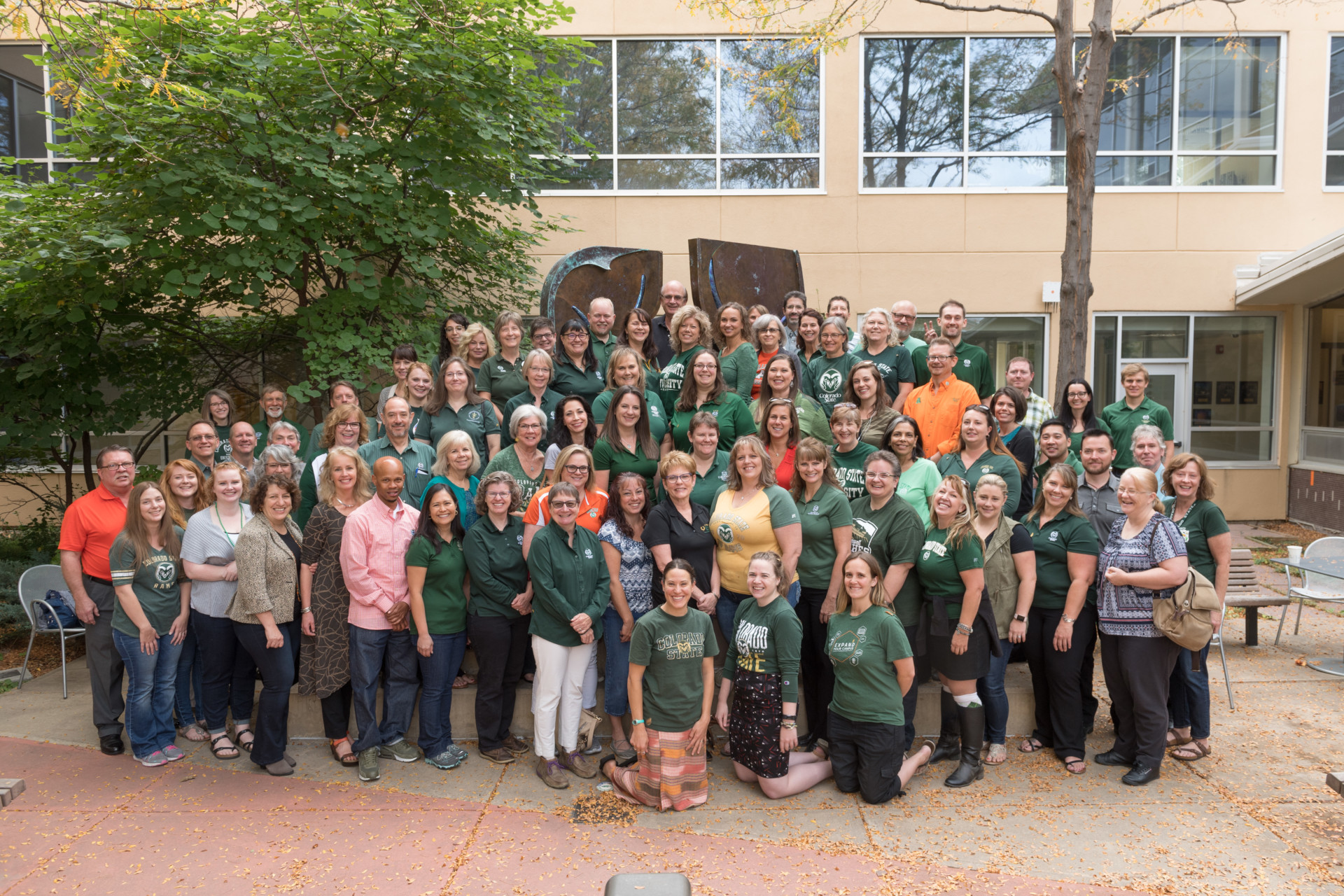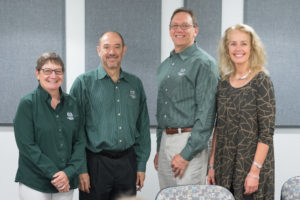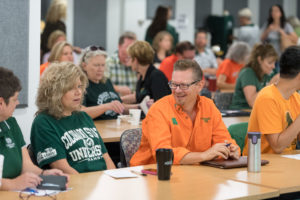
Members of RAMAround meet monthly in Morgan Library to share experiences and best practices in negotiating the research grant funding process.
Photos by John Eisele, CSU Photography
With Colorado State University’s research expenditures reaching a record of nearly $375 million for fiscal year 2018 – one-third of the institution’s overall annual billion-dollar budget – the University is poised to continue its high-level research mission. While grants from both public and private sources allow faculty and researchers to explore important scientific questions and make cutting-edge discoveries, each one comes with its own set of specific reporting rules and regulations.
“As our reputation grows, so does our research funding, and with the privilege of that funding come rules we have to follow in new ways,” explained Rick Miranda, provost and executive vice president for CSU. “It is our goal to have a research program that is the envy of other R1 institutions and become a university that others look to when they need a model of the right way to do things.”
This is where the small platoon of CSU’s research administrators comes in, to make sure we do research right. More than 160 dedicated professionals are deployed in colleges, units, departments and labs across campus and in remote locations, all with the mission of helping investigators secure external funding, then ensuring compliance with the terms and conditions of the funding contracts once the research begins.
“Research administrators play a critical role in the success of our research enterprise,” said Vice President for Research Alan Rudolph. “They make our research possible in significant ways.”
A sense of humor

The research administrator’s job starts in the pre-award phase with assisting faculty in the development of the administrative sections of a grant proposal, completing required government and agency forms, drafting budget justifications, interpreting guidelines, document coordination, and helping to meet deadlines. It continues through ensuring the request is submitted correctly, and, once the grant is awarded, really ramps up with negotiating the award requirements, setting up accounts and cost accounting so researchers can spend the funds properly, and keeping on top of all the reports required throughout the life of the grant.
It can be as complicated as it sounds, especially when you add in compliance with shifting policies at the university, state and federal levels and all the different rules and regulations of all the different funding partners — one project can have multiple funding sources and potential subcontractors at other institutions, and each researcher can have multiple sponsored projects underway at once.
That’s why the top characteristic that Diane Barrett, director of the Office of Sponsored Programs, looks for when hiring a new research administrator is a sense of humor.
“No one goes into this profession on purpose,” explained Barrett, who has been in research administration for more than three decades but whose education was in the performing arts. In fact, there is no undergraduate program in research administration anywhere. “But once you start working in it, you get hooked. It’s intellectually rewarding, constantly changing, and you get to work with a great, collaborative group of people. It keeps you on your toes.”
Indeed, a 2016 survey of the members of the Society of Research Administrators International found that administrators themselves ranked knowledge of rules and regulations and customer service and collegiality the most important qualities for success in the field. No one considered math and budgeting proficiency the quality of most importance.
Christa Johnson, associate vice president for research, sees the role of the Office of Sponsored Programs as not only supporting the university’s overall research enterprise, but also providing research administrators the resources they need to support individual faculty in their research.
“Our efforts aren’t top-down; we give people a chance to interact, meet in person, learn new things, and share what they know,” said Johnson, who started her career teaching the humanities. “They share knowledge, and best practices – everything. We learn so much in the process.”
A network of knowledge

When Johnson came to CSU from Washington University in 2015, one of her first initiatives was to bring the far-flung research administrators closer together, so they can share what they have learned through dealing with various funding agencies. The result was RAM (Research Administrators and Managers) Around, which meets monthly in the Morgan Library Event Hall to provide a forum for knowledge exchange as well as professional development.
“The research administrators at CSU are naturally a very collaborative group, and Christa and Diane have helped make us more so,” said Margi Cech, financial and research manager for the College of Natural Sciences, who was always fascinated by research but was never involved in it as an undergrad. “Their efforts, such as RAMAround, have really elevated an awareness of the importance of research administration on campus. We have established a tremendous network of colleagues we can call on when we have questions about a certain funding agency or a new requirement.”
Ron Splittgerber, director of research services who started at CSU as a volunteer in the 1960s while he was a student at Fort Collins High School, has seen several important changes over the years: grant systems moving from paper to online, for example, as well as the professionalization of the research administrator role, and the growing appreciation of their importance to the success of the university’s research enterprise.
“Research has always been part of CSU’s land-grant mission,” he said. ”Our vision for a healthy institution depends on a unified approach to the research mission. (CSU President) Tony Frank and the VP for research understand that we wouldn’t be successful without it, and through things like RAMAround, I feel the administration really appreciates the research administrators and is listening to their concerns.”